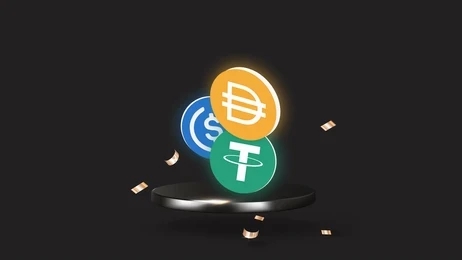At times, individuals viewed stablecoins as the best category of cryptocurrency because there has the same blockchain technology as other cryptocurrencies, and most especially, there don’t possess the volatility property that other cryptocurrencies and Bitcoin inclusive have. In the truest meaning of the word, there are stablecoins.
The total market capitalization of stablecoins as of 31st, January 2023 was at $138.4 Billion. Stablecoins are becoming much more popular in the cryptocurrency space.
Well, many novices in the crypto industry come up with different questions about stablecoins such as whether; are stablecoins good on investing in, how are there peculiar from cryptocurrencies, what are there, what are kinds of those coins classified as stablecoins, how or why is the price stable with low volatility? etc. You are in the right place if you are among those asking the above questions. In this article, we will be making emphasis these questions and other important things one needs to know about stablecoins.
What Are Stablecoins?

Stablecoins are cryptocurrencies in which their prices are pegged to or backed by a stable asset. Most of the stablecoins are pegged to paper currency. For example, $USDT is pegged to the dollar. In some cases, commodities such as Gold are also pegged. We have different examples of stablecoins in cryptocurrency, some are; USDT, BUSD, DIA, PAX, etc
Types Of Stablecoins

Generally, we have four different kinds of stablecoins. Four of these coins are developed based on different purposes. These coins include;
- Cryptocurrency-backed stablecoin,
- Algorithmic stable coin,
- Fiat-backed stablecoin,
- Commodity-backed stablecoin.
Of the above-listed kinds of stablecoins, two are decentralized that are not held by any third party (there are; algorithmic and cryptocurrency), and two are centralized that are held by a third party (commodity-backed and fiat-backed).
For clarification and more insights, explanations on each of the kinds of stablecoins will be made in the substituent paragraphs.
Cryptocurrency Backed Stablecoin
With the help of smart contracts, fiat-backed stable coins, and cryptocurrency-stable coins are gotten. That stablecoin is pegged to cryptocurrencies. Usually, due to the unpredicted nature of the price of a cryptocurrency, coins are frequently backed by many cryptocurrencies. If there is a high volatility in the price of a particular coin, the other will remain stable.
Using a method known as over-collateralization, some of these coins are safeguarded. It described a situation where a coin is been used to safeguard another and it is backed by an asset worth more than the coin’s actual value. The collateral in which crypto is been backed up with stablecoin worth in multiple.
Algorithmic Stablecoin
In some cases, non-collateral stable coins exist and an example of such is the algorithmic stablecoin. This algorithm is openly transparent and perceptible for everyone to see. Smart contracts and algorithmic pegging regulate the supply of stablecoin. These stablecoins’ prices are determined by supply and demand. An algorithm-based methodology regulates the availability of stablecoins.
The algorithm will continue to create coins if the price of the stablecoin rises until supply and demand are balanced. The price of the stablecoin will be reduced if the price fall as a result of the supply, not until demand and supply are been balanced, the process will continue. The program can maintain the coin price stability by carrying out these actions.
Fiat Backed Stablecoin
Let’s say someone wants to change his/her stable coin for cash. The fiat currency saved in reserves will be transferred to the person’s account by the entity holding the stablecoin and withdrawn from the circulating number of stablecoins which equalizes the fiat currency in circulation. It is essential to know that the majority of the stablecoins are tied to fiat currencies like EUR or USD. This is carried out nearly on a ratio of 1:1. This means that there is a unit of fiat currency kept someplace in reserves for every stablecoin.
There are sometimes, fiat-backed stablecoins are viewed as a bridge between more conventional forms of payment and the advantages cryptocurrencies may offer in this field due to their cheap fees, use of blockchain technology, and minimal exposure to volatility. One of the disadvantages of a backed stablecoin is the centralization feature. It is impossible to verify protocol compliance and transparency due to the centralization nature.
Commodity Backed Stablecoin
The majority of stablecoins under this are backed by gold, but there can be also backed by other commodities such as oil or metal. The price volatility can be controlled by these goods. Commodity investment can be effortlessly accessible to investors due to the stablecoins backed by commodities.
Although, gold investments have always been reserved for wealthy investors. With the help of stablecoin, gold has been made potentially accessible to every individual.
How Minimal Volatility And Price Stability Maintain With a Stablecoin?
One of the main merits of stablecoins is the price stability and minimal volatility. It should be stressed that stablecoins are stable only to the coin that there are pegged to. Stablecoins are by definition pegged to assets with a track record of stability, but that does not mean they are resistant to volatility.
The volatility of table coins may be price fluctuations. though, such occurrences are not often. This is due to the strong stability of the asset there are backed by, stable coins are often quite stable.
How Do Stablecoins Maintain Their Peg?
The market must have confidence in the asset that the coin is pegged to for the peg to be maintained. This has to be traced down to faith issues. The reason we see coins pegged to dependable assets such as the US dollar, oil, and gold.
Let’s consider USDT for example, USDT is pegged to the US dollar. This means that the parent firm tether maintains a US dollar in stores for each unit of USDT. The market will fall if potential investors lost faith in the value of one USDT unit as $1.
However, the fact that the value of the USDT has, for the most part, consistently stayed quite near to $1 is evidence of the market has confidence in it.
How To Buy Stablecoins?
You can buy stable coins on cryptocurrency exchange platforms. Using USDT as an example, you can buy it from a centralized crypto exchange like Binance if you meet their registration requirements and get verified. The following steps are to be taken in buying a stable coin from Binance using USDT as a case study.
Download Binance from a play store or an apple store and sign up,
Use a payment method such as bank transfer or credit card, and if you are from Nigeria or Ghana, go to the P2P section and buy.
Uses Of Stablecoin
Stablecoins are used as an exchange from other cryptocurrencies: assuming a crypto investor or a trader who is worried about the possibility of a decline in the price value of $ETH about the dollar. The trader could decide against enchaining to fiat since the costs associated with processing can be high. The best decision in a case as such is to exchange the $ETH for a stablecoin (USDT). By doing that, the tension of loss will be reduced since USDT is pegged to the dollar.
Used For Carrying Out Transactions: stablecoins are utilized for transactions more and more because blockchain technology made it possible to complete international transactions much more rapidly than with more conventional methods.
Decentralized Finance: this system uses smart contracts to provide a public blockchain-based alternative to traditional financial services and there has gained a strong presence in the financial institution in recent years. In the decentralized ecosystem, stablecoins made a huge impact by providing a reliable mechanism of transaction.
Summary
Stablecoins encourage stability in the crypto industry and the advantages of blockchain technology, making them trustworthy and dependable for transactions in the cryptocurrency ecosystem. Their rapid acceptance in the economy can transform the traditional finance system of transactions for over 1.5 billion individuals without bank accounts around the globe.
Stablecoins have a promising future as there turn out to be a hedge against the hyperinflation that the Western world is experiencing.






